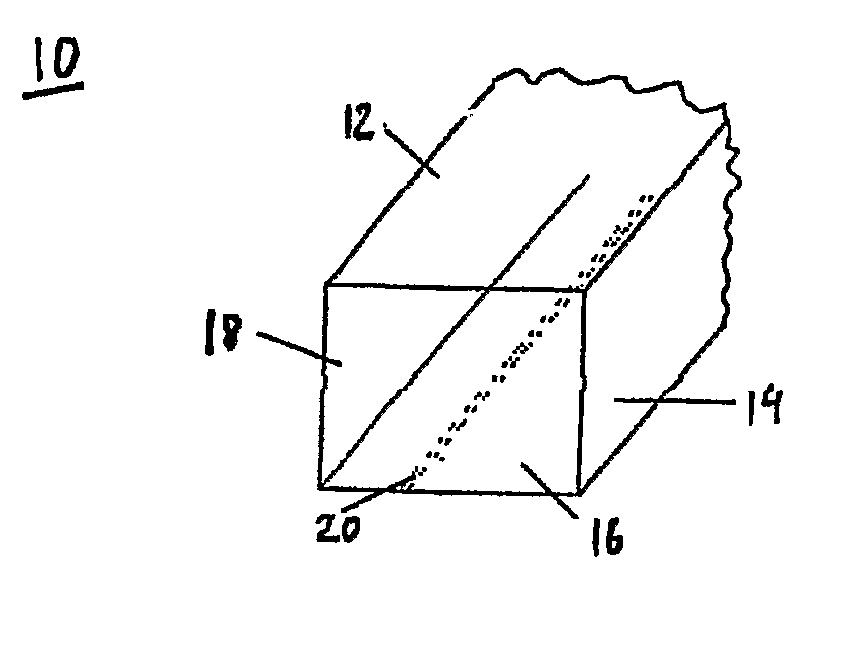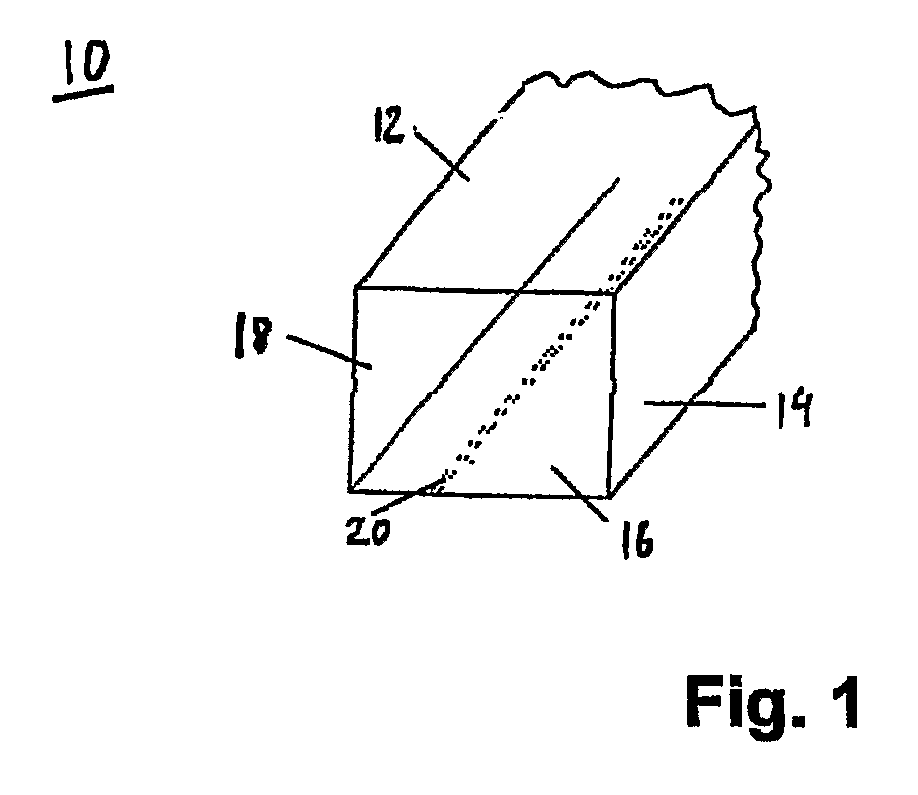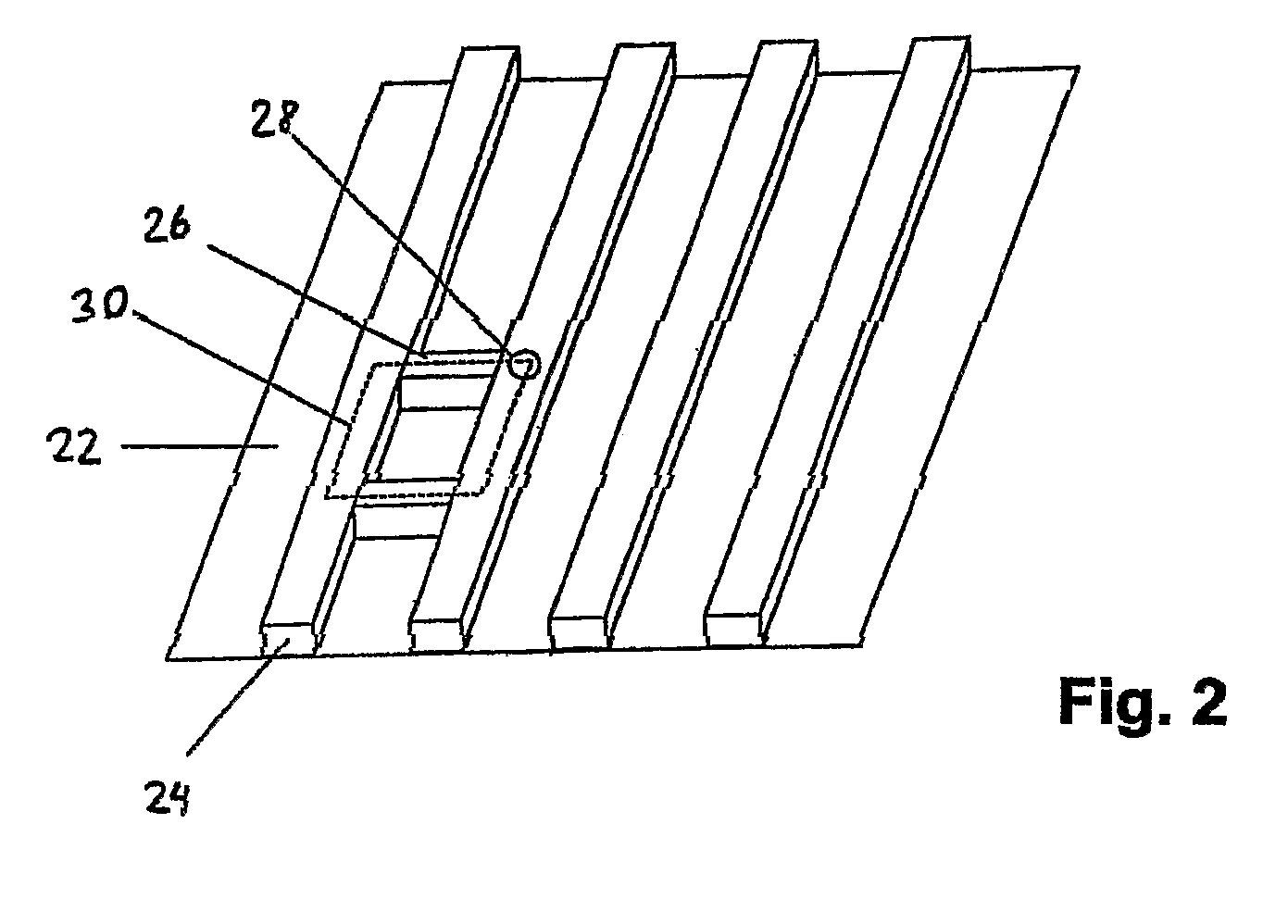Method for producing a continuous, three-dimensional, closed semi-finished product made of fiber composite
a technology of fibre composite and semi-finished products, applied in the direction of adhesives, lamination, chemical instruments and processes, etc., can solve the problems of more widespread application and difficulty in handling of this technology, and achieve the effect of simple manufacturing, optimum load conditions, and low cos
- Summary
- Abstract
- Description
- Claims
- Application Information
AI Technical Summary
Benefits of technology
Problems solved by technology
Method used
Image
Examples
Embodiment Construction
[0030]FIG. 1 is a more a less diagrammatic cross section of a three-dimensional semi-finished product in the form of a reinforcing structural profile, designated overall by reference number 10. Reinforcing structure profile 10 is constructed from several layers of planar, flat fibrous performs and has an essentially square cross sectional area.
[0031]The fibre architecture and nature of the planar, flat fibrous performs have been selected such that each of the lateral surfaces 12, 14, 16, 18 of reinforcing structural profile 10 has a precisely defined layer composition.
[0032]Having been aligned and adjusted to yield the desired fibre architecture, and formed to produce the essentially square cross section as shown, the structure in this case was closed using a continuously operating feed-off-the-arm stitcher. The stitches 20 created serve to stabilise the material and enable it to be processed further in the dry state.
[0033]The “tube” created thereby may for example be draped over a ...
PUM
| Property | Measurement | Unit |
|---|---|---|
| thickness | aaaaa | aaaaa |
| width | aaaaa | aaaaa |
| length | aaaaa | aaaaa |
Abstract
Description
Claims
Application Information
 Login to View More
Login to View More - R&D
- Intellectual Property
- Life Sciences
- Materials
- Tech Scout
- Unparalleled Data Quality
- Higher Quality Content
- 60% Fewer Hallucinations
Browse by: Latest US Patents, China's latest patents, Technical Efficacy Thesaurus, Application Domain, Technology Topic, Popular Technical Reports.
© 2025 PatSnap. All rights reserved.Legal|Privacy policy|Modern Slavery Act Transparency Statement|Sitemap|About US| Contact US: help@patsnap.com



